Australia So Much to See
Kati Thanda (Lake Eyre)
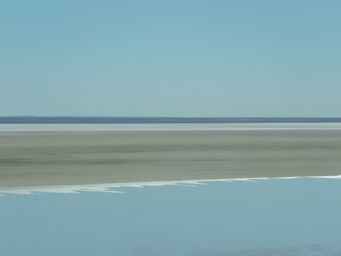
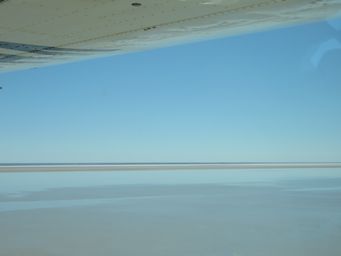
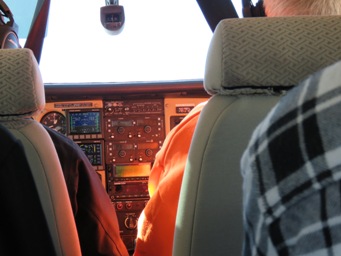
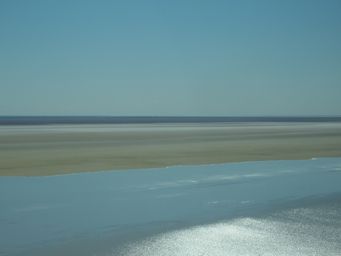
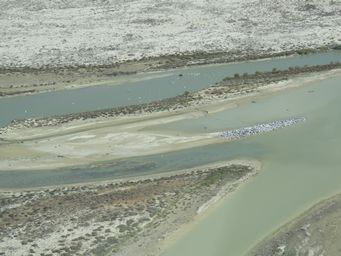
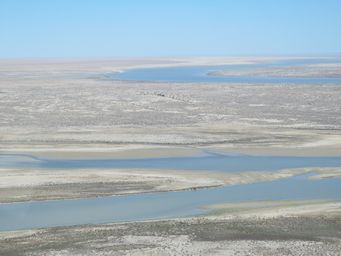
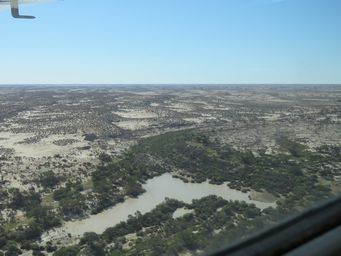
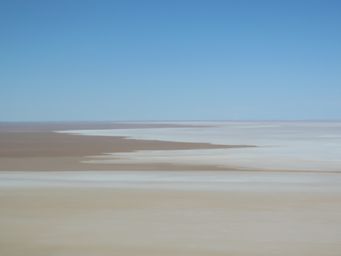
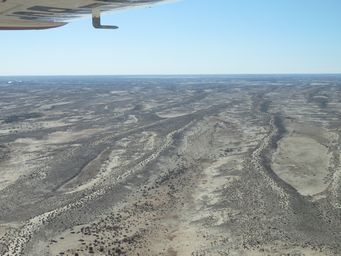
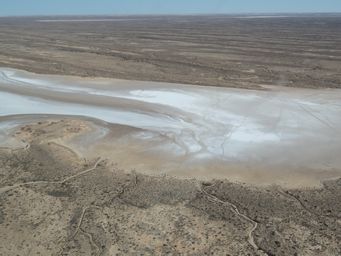
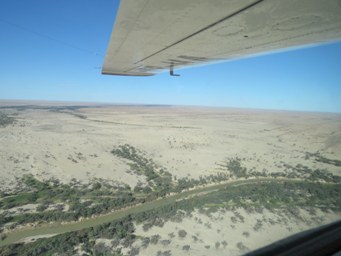
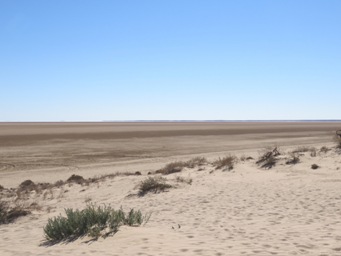
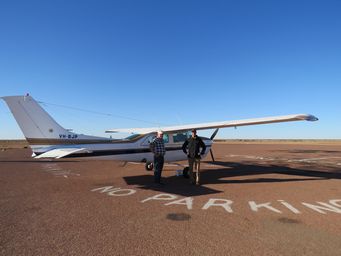
The
Warburton Groove runs from north to south through the lake, and this channel is around five kilometres wide.
Inside the plane. The front seat passenger is alongside the pilot with a good view of the instrument panel and navigation equipment. But you cannot choose this seat. The plane is loaded with the lightest person at the back to the heaviest at the front. This is inside a small plane, used for the two hour flight. Larger planes are used for the more popular one hour flight. Travellers we spoke to chose a half day flight which included the Painted Hills on Anna Creek Station, and they were the only passengers.
Wrights Air flies over Lake Eyre from William Creek, Marree, Coober Pedy and Wilpena Pound.
Birds, mainly Pelicans, were mostly seen on the channels where the Warburton Intake enters the lake (above left). We did see a number of other smaller birds on the water and in flight over the water during the tour.
To the north, the Warburton Intake
meanders across a dry desert (above right). The Cooper intake is from the east, but that was not contributing to the lake at
this time, due to the rainfall being less in its catchment area.
Soon much of Lake Eyre will be dry again, and a shining saltpan like these small saltpans (above right). Evaporation is very
rapid in the summer heat.
With the popularity of the Lake Eyre this year, the sixty-five kilometre track from William Creek to Halligan Bay was very corrugated
according to other travellers, so we chose to skip this option.
We later visited the Lake Eyre bed at ground
level from the south (see more here). Coming from Muloorina Station, the track met and followed the length of the fifteen kilometre
Goyder’s Channel that links Lake Eyre North and Lake Eyre South, and ended at our destination, Level Post Bay on the south eastern
edge of Lake Eyre North. This bay became known by its unusual name when a marked post was placed in the lake in 1950 to measure
the rate of evaporation. This post was washed away when Lake Eyre filled in 1974. We look north across the flats. The appearance of water in the distance was a mirage.
Donald Campbell achieved breaking the world land speed record from here in 1964. See more about Donald Campbell’s achievements on
We visit Lake
Dumbleyung, site of the water speed record in 1964.
An old woman was looking for food and saw a big one (Kangaroo) which she wanted to kill. A young boy Wilkuda sprang from here inside and chased the Kangaroo in a westerly direct across what is now Lake Eyre. Near Peake Station Homestead he killed the Kangaroo and put a bit on a fire.
He went to sleep as it was cooking and when he woke found the Kangaroo had run off. He chased it and cut it from a large mob of Kangaroos and continued the chase. This made him very tired and eventually an old man with his hunting dog killed the Kangaroo. He skinned it and Wilkuda came and told him it was his Kangaroo. He let the old man keep the flesh but he took the skin heading back east.
At several spots along the way he was looking to lay down the skin
and make a lake, but a little bird Yuriila told him not to do so as people had to walk about there. Finally he came to a spot
east of Anna Creek and threw down the skin, which became Lake Eyre. He himself, along with his knife and bag, turned into a
stone nearby.
From information boards at Lake Eyre South lookout.
Arabunna story recorded by Anthropologist A.P. Elkin